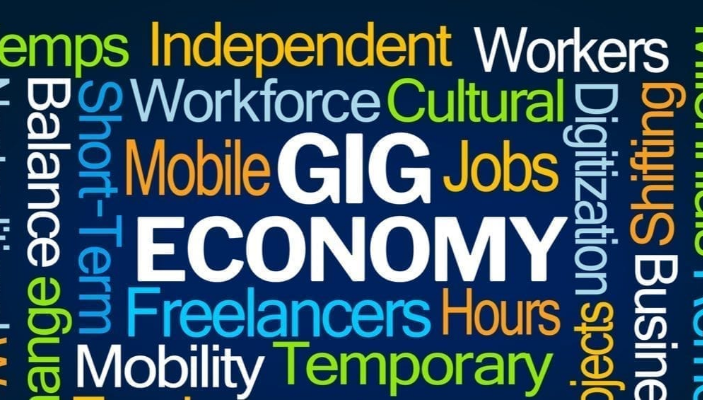E-commerce continues to evolve in 2025, offering new avenues for individuals and businesses to generate income. From AI-powered storefronts to niche product offerings, the tools and opportunities available today have never been more accessible or dynamic. Whether you’re just starting or looking to grow, the current landscape supports flexible business models with room for both newcomers and seasoned professionals.
Why E-commerce Is Still Growing
Global Accessibility
More people have access to the internet than ever before, and mobile commerce is exploding across regions like Southeast Asia, Africa, and South America. This expansion provides merchants with a wider and more diverse customer base.
Low Barriers to Entry
Thanks to platforms like Shopify, Etsy, WooCommerce, and Wix, launching an online store no longer requires deep technical expertise. Even solopreneurs can now build feature-rich e-commerce sites from scratch.
Shift in Consumer Behavior
Customers in 2025 are more comfortable shopping online—even for items they previously preferred to buy in person, like groceries, luxury products, and personal services. Consumer expectations for convenience, personalization, and speed are higher, which opens the door for sellers who can meet these needs.
Practical Ways to Earn with E-commerce in 2025
1. Launch a Product-Focused Store
Create a store around a physical product—be it handmade crafts, tech accessories, or pet gear. What matters most is identifying a niche with consistent demand and minimal competition.
Key Tips:
- Focus on a micro-niche (e.g., bamboo pet bowls instead of general pet supplies).
- Use search intent data to guide product descriptions and categories.
- Offer bundles or subscription boxes for better margins.
2. Build a Print-on-Demand Business
Print-on-demand (POD) lets you sell customized products like T-shirts, mugs, phone cases, and posters—without holding inventory.
Why POD Works:
- No upfront stock investment.
- Designs can be created using AI tools or freelance designers.
- Integrated services like Printful and Gelato sync easily with Shopify or Etsy.
3. Sell Digital Products
E-books, templates, online courses, and downloadable planners are all examples of digital products that generate passive income.
What Makes Digital Sales Effective:
- Unlimited scaling with zero shipping costs.
- High-profit margins.
- Easy automation using email sequences and landing pages.
Future-Ready Tactics for E-commerce Success
Focus on First-Party Data
With third-party cookies phasing out, your success will depend on collecting and leveraging first-party data—like email signups, SMS opt-ins, and loyalty program data.
Use AI to Personalize Experience
From product recommendations to dynamic pricing, AI tools can create more personalized experiences that boost conversion rates.
Optimize for Voice Search
Voice commerce is on the rise. People are asking Siri, Google, and Alexa to “buy running shoes” or “find the best planner for 2025.” Optimizing your product descriptions and meta content to reflect these speech-based queries is key.
Choosing the Right Platform
Shopify
Ideal for serious sellers wanting full control, excellent integrations, and scalability.
Etsy
Perfect for handmade goods, vintage items, or printables—especially if you’re targeting a community that already shops on Etsy.
WooCommerce (WordPress)
Better for those who want a self-hosted store with deep customization options and full ownership.
Amazon FBA
If you want access to Amazon’s customer base and logistics, Fulfillment by Amazon allows you to scale without dealing with shipping directly.
Marketing Strategies That Work in 2025
1. Content Marketing with Purpose
Use helpful blogs, short videos, and tutorials that align with user intent. Google rewards original, helpful content that provides real answers to user questions.
Example:
If you sell reusable notebooks, write a blog post titled:
“How to Stay Organized with Reusable Notebooks [Eco-Friendly Tips]”
2. Short-Form Video
Platforms like TikTok, Instagram Reels, and YouTube Shorts are still highly relevant. People want to see how your product works, what it feels like to use, and what problems it solves.
3. Paid Ads with Clear Goals
Use Meta Ads (Facebook/Instagram), Pinterest Ads, or Google Shopping to reach new audiences—but avoid wasteful spending by narrowing your audience and using specific creative assets.
4. Email Marketing
Ecommerce brands in 2025 need to invest in high-converting email sequences:
- Abandoned cart reminders
- Welcome offers
- Post-purchase follow-ups
5. Influencer Collaborations
Micro and nano-influencers offer high engagement and lower costs. Partner with creators whose audience aligns with your niche.
Logistics and Fulfillment
Choose Reliable Shipping Partners
Fast and affordable delivery is a make-or-break factor in user satisfaction. Partner with fulfillment services that offer tracking, clear return policies, and fast dispatch.
Streamline Your Checkout Process
Offer multiple payment options—Google Pay, Apple Pay, credit cards, and Buy Now Pay Later (BNPL). A clunky checkout process leads to lost sales.
Customer Trust and Social Proof
Add Reviews and Ratings
Customers want validation before making a purchase. Include star ratings, customer testimonials, and verified buyer tags.
Transparent Policies
Include clear return, refund, and shipping policies. Avoid hidden charges.
Trends Shaping E-commerce in 2025
Sustainable Commerce
Consumers are leaning toward eco-friendly packaging, carbon-neutral shipping, and sustainable products. Highlighting your green practices can build loyalty.
Subscription Models
Subscription commerce continues to grow. Whether it’s for skincare, snacks, or business tools, subscriptions increase lifetime customer value.
AR & VR for Product Interaction
Augmented reality lets users see how furniture looks in their room or how clothes might fit. If you’re in fashion, home decor, or accessories, consider adding this layer of interaction.
Real Case: From Zero to $50K in Sales
Sarah, a freelance illustrator, launched a print-on-demand store in late 2023. By focusing on niche art prints for pet lovers and integrating AI-generated marketing emails, she grew her brand organically. In just 14 months, she crossed $50,000 in total revenue with minimal ad spend. Her success shows that starting small with a focused strategy pays off.
Common Pitfalls to Avoid
- Skipping market research: Validate demand before launching.
- Poor product photography: High-quality images build trust.
- Ignoring customer support: Prompt responses to queries and complaints are essential.
- No mobile optimization: Your site must load fast and look great on all devices.
Getting Started: A Step-by-Step Framework
- Choose your niche
Focus on a specific product or audience. - Select your platform
Pick the one that fits your budget, skills, and product type. - Source or create your product
Whether it’s dropshipping, handmade, or digital—quality matters. - Set up your online store
Use clean design, user-friendly navigation, and compelling product pages. - Develop a launch marketing plan
Use organic and paid strategies to build awareness and drive traffic. - Test, learn, and adapt
Track metrics, gather feedback, and optimize your funnel regularly.
Final Thoughts
E-commerce in 2025 is about more than selling a product—it’s about delivering value, building relationships, and staying adaptable. The path to success may be different for everyone, but with thoughtful execution and genuine customer focus, building a profitable online store is well within reach.
5 Short FAQs
Q1: Can I start an e-commerce store without inventory?
Yes, through dropshipping or print-on-demand models, you don’t need to stock products yourself.
Q2: What is the best platform for beginners?
Shopify is a great all-in-one option, while Etsy is ideal for creatives and handmade sellers.
Q3: How much money do I need to start?
You can start with under $100 if using low-cost platforms and focusing on digital or POD products.
Q4: Is SEO still important for e-commerce?
Absolutely. Original product descriptions, helpful blogs, and strong internal linking help drive organic traffic.
Q5: What’s the most profitable e-commerce niche in 2025?
Trends shift, but health, personal finance, pet care, and sustainable products remain strong performers.






![Scale Fast with Siege Market [Brand Growth Tips]](https://wisheszing.shop/wp-content/uploads/2025/07/Scale-Fast-with-Siege-Market-Brand-Growth-Tips.png)
